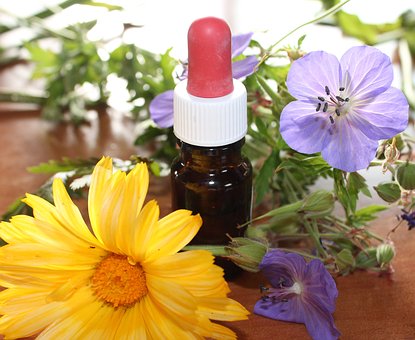Chelidonium majus
A perennial herb with branching stems that grow to 2 1/2 feet high and swell at the nodes. Smooth, deeply divided leaves with lobed leaflets spread alternately along the lower stem. The flowers (April-September) are bright yellow. When any part of the plant is broken, it exudes an acrid, sticky orange juice with an unpleasant smell.
The belief that the plant flourished with the swallow’s spring arrival and withered with their fall departure derived from classical antiquity, when the plant was accordingly called chelidonium – equivalent to the common name swallowwort (“swallow herb”). Another legend held that the swallows used the juice of the herb to strengthen the eyesight of their fledgings. By extension, the plant’s juice was used for eye drops to treat cataracts in humans, but this use was discontinued long ago.
Herbalists, following the doctrine of signatures, took the bright orange color of the juice as a divine sign that it was a remedy for jaundice and liver ailments. The juice was also employed to remove warts and soften calluses. The name tetterwort comes from the use of the juice in folk medicine to treat skin problems such as pimples and blisters, disorders that were formerly called tetters.
The juice has a strong skin-irritating effect, and was used in folk medicine to remove warts and treat such skin diseases as eczema and ringworm. Today celandine is mainly used in the production of a yellow dye for wool.
Damp rich soil on the edges of forests, paths, and walls and among rocks and bushes.
Range: Northeastern Canada and United States, south to Georgia, Tennessee, and Missouri.
Celandine contains viricidal alkaloids, pigment, bitter principles, carotenes, chelidonic acid, essential oil, proteolytic enzymes.
APPLICATIONS
Fresh sap: in the case of conjunctivitis or genital warts, use celandine diluted in boiling water (1/20). To treat a wart, apply the fresh sap, which forms beads at the stem axil, 2 times daily for several consecutive days. The entire plant can also be used in a poultice on a wound. In a mother tincture, take 5 drops, 3 times a day in water or apply directly onto a wart or corn; for external use, diluted in 1 cup (250 ml) boiling water to clean an open wound or in the case of infected mucous membranes.
A decoction made from the fresh plant – 1 leaflet for 1 cup (250 ml) water – 3 times a day to cleanse the liver and gallbladder. Add chamomile, mint or dandelion to improve the bitter, acrid taste of celandine. Doing this type of cure for 3 weeks is an excellent way to treat eczema, psoriasis and even arteriosclerosis (hardening of the arteries).
ANTI – WART TINCTURE
• 1/3 oz (10 g) freshly crushed celandine
• 1 cup (250 ml) apple cider vinegar
Combine and let stand for 1 month in a glass jar away from light. Shake every 2 to 3 days. Strain.
Apply undiluted onto the warts 2 times a day or, use a pad soaked in tincture and place with a bandage. Change regularly over the course of 1 week.
Can be taken internally at a rate of 5 drops in 1/2 cup (150rnl) of water before the 3 meals to cleanse the liver.

